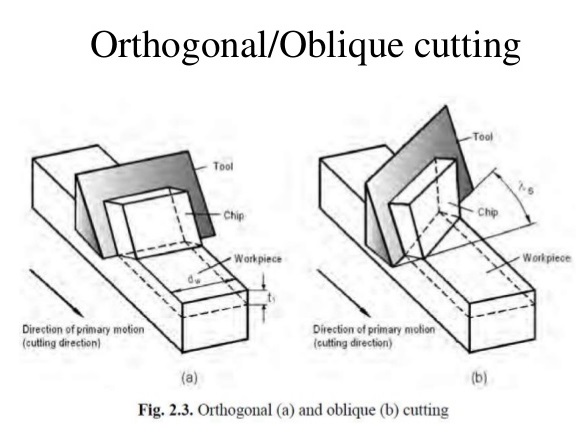Difference between Orthogonal and Oblique Cutting
Orthogonal Cutting
In orthogonal cutting, the tool approaches the work piece with its cutting edge parallel to the uncut surface and at right angles to the direction of cutting. Thus tool approach angle and cutting edge inclination are Zero. This type of cutting is also known as Two-dimensional Cutting.
Oblique Cutting
In oblique cutting , the cutting edge of the tool is inclined at an acute angle with the direction of tool feed or work feed, the chip begin disposed of at a certain angle. This type of cutting is also called Three-dimensional cutting.
 |
| Difference Between Orthogonal and Oblique Cutting |
Comparison between the orthogonal and oblique cutting
Orthogonal cutting | Oblique Cutting |
The cutting edge of the tool is perpendicular to the direction of feed motion. | The cutting edge of the tool is inclined to the direction of feed motion. |
The chip flow angle is more than zero. | |
There are only two components of force; these components are mutually perpendicular. | There are three mutually perpendicular forces acting while cutting process. |
The cutting edge is larger than cutting width. | The cutting edge may or may not be larger than cutting width. |
Chips are in the form of a spiral coil. | Chip flow is in a sideways direction. |
High heat concentration at cutting region. | Less concentration of heat at cutting region compared to orthogonal cutting. |
For a given feed and depth of cutting, the force acts on a small area as compared with oblique cutting, so tool life is less. | Force is acting on a large area, results in more tool life. |
Surface finish is poor. | Good surface finish obtained. |
Used in grooving, parting, slotting, pipe cutting. | Used almost all industrial cutting, used in drilling, grinding, milling. |